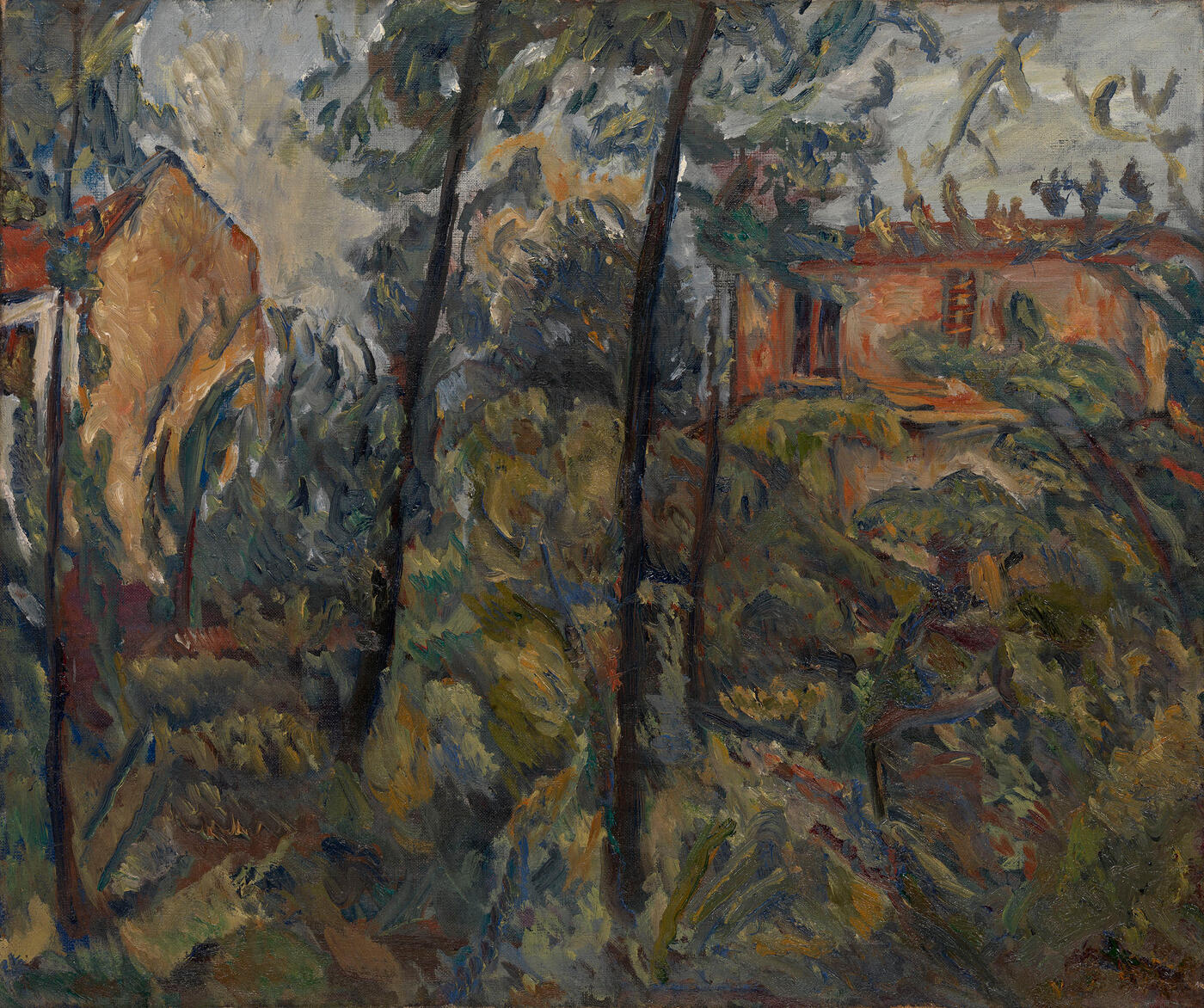MacDougall's Russian Art Auctions 1 December 2011
1 December 2011

31. SOUTINE, CHAIM (1893-1943)
Landscape with Houses
Oil on canvas, 54 by 65 cm.
600,000-900,000 GBP
Executed c. 1918.
Provenance: Private collection, France.
Exhibited: Chaim Soutine: The Passion of Painting, Galerie Thomas, Munich, 31 March-16 May 2009.
Literature: Exhibition catalogue, Chaim Soutine: The Passion of Painting, Munich, Galerie Thomas, 2009, pp. 62-65, illustrated.
The work will be included in Volume III of the Chaim Soutine catalogue raisonné currently being prepared by Maurice Tuchman and Esti Dunow.
Landscape with Houses, painted by Chaim Soutine just before he left for a trip to Vence and Cagnes-sur-Mer, is among the artist’s best-known early landscapes. In place of the localised patches of colour found in the tranquil and mournful works of his youth, we see the clear arrival of the distinctive, vibrant painting style of the mature Soutine. Although the composition of this landscape is generally fairly calm and without any outburst of drama, the nature of his line and the texture of the paint surface, the confrontation between blocks of colour and the decisive distortion of forms resonate with that particular, thrilling expressiveness that we see in this artist’s best work.
It is in works like this that the artist’s highly original style came together; the style that brought fame to the poor boy from the Jewish shtetl of Smilovichy, who made his name as the only independent Expressionist painter of the École de Paris and who produced such an impression on Amedeo Modigliani, who considered Soutine’s talent far greater than his own. The lessons of Van Gogh and Cézanne, Derain and Vlaminck, Jawlensky and Modigliani, and even Rembrandt — all of these are rethought, relived and re-cast in a new form in this small Paris landscape.
In all probability it was painted not far from the studio in the Cité Falguière, near Montparnasse, that Soutine shared with Modigliani, or in one of the streets of Clamart, the suburb through which he would often pass on his way to the studio of Mikhail Kikoine, a friend from their time at art school in Vilnius. In any event, the setting of the painting is not easily identified, given that this neat little garden on the outskirts of Paris has been robbed of its usual appearance. The houses, land and trees become one and they dazzle the viewer with their energy and with the unexpectedly powerful and polyphonic manifestation of their life source. This prefigures the motif of a tornado or hurricane sweeping across the land and spinning everything in its path upwards into an elastic spiral, as would be seen in Soutine’s pictures of the late 1920s and early 1930s.
Experts on Soutine often mention the influence of Cézanne, particularly clearly felt in the works of the late 1910s. It is seen in the flattening of the painting’s depth and also in the dominance of form over volume. However, the transformation of reality in Landscape with Houses cannot be attributed to the influence of Cézanne alone. It hinges on his own personal take on the general developments of the European avant-garde, which he had already formulated before the war when still a poor, half-starved artist. In that “golden age” Kandinsky often came over to Paris from Munich, and the habitués of La Rotonde included not only Picasso, Derain, Vlaminck and Braque but also the younger generation — Modigliani, Zadkine, Soutine... The indefatigable Kandinsky kept communication going between the French Fauvists and the German Expressionists, organising joint exhibitions in Munich and Moscow. It therefore comes as no surprise that Soutine’s landscapes reveal the influence of Cézanne on the one hand and of Jawlensky on the other, and that his still lifes display similarities with those of the Jack of Diamonds group. However, even in these early works we already sense not so much a concern for decorativeness as for drama, an acute honesty and a not yet fully developed sense of tragedy.
According to contemporaries, Soutine had an unhealthy obsession with the colour red but in this landscape we can only see two red-ochre buildings peeping out from behind the trees in the background which serve as a means of stabilizing the composition and in which lively, impastoed brush-strokes create depth and form, and the “lines of force” of the trunks and branches reach skywards.
These works of 1918, which Soutine painted when in Paris and a few weeks later in the Mediterranean, brought the artist his first real taste of celebrity and financial success. They only really began to sell in any great number a few years later, when Albert C. Barnes, a collector from Philadelphia, came to Paris. In 1927 Soutine had his first solo exhibition at the Bing Gallery in Paris, followed by highly successful shows in New York, London and Paris. Soutine’s landscapes became especially popular in the postwar period when they were eagerly bought up by American millionaires and Arab sheikhs, as well as the cultural elite, including the Chaplin family, the Rossellinis and even Picasso himself.
Notes on symbols:
* Indicates 5% Import Duty Charge applies.
Ω Indicates 20% Import Duty Charge applies.
§ Indicates Artist's Resale Right applies.
† Indicates Standard VAT scheme applies, and the rate of 20% VAT will be charged on both hammer price and premium.